Bodybuilding
High-Rich Protein Diets Are Healthier For Bodybuilding And Don’t Cause Osteoporosis
The fact that strength raining associated with a high-rich protein diet results in muscle growth is well-known. What will surprise you is that such a diet is healthier than you think, contrary to what you may hear before. Experts said high protein consumption might damage your liver and kidney and cause other health problems. Research from Pusan National University in South Korea has demonstrated that eating more proteins helps build muscle and is much healthier than other diets.
The study includes 18 males with no previous weight training experience. They were divided into two groups and told to do strength training for three months. The workout consists of weightlifting with a maximum of 80 percent of their weight. Diet was different for both groups: 60/15/25 percentages of carbs/proteins/fats were the diet specific of the first group, while for the second, the proportions were a bit different-55%carbs/30%proteins and 15% fat.
The amounts of calories were the same for both categories. In the final, individuals whose diet contained more proteins registered a higher increase in muscle mass, while in the second case, the improvements were below the expectations. The body fat percentage was not a big difference, but it was. Those who eat more foods rich in proteins have burned slightly more fat tissues than those who follow a regular diet.
The growth hormone level was also higher in the case of a higher protein consumption diet which is normal if a more evident increase in muscle mass was registered. The balance of good/bad cholesterol was also positively affected in the case of those who eat more protein. HDL level- good cholesterol- has risen, while LDL level has lowered slightly.
The overall body indicators have improved due to a high-rich protein diet mixed with strength exercises. The metabolism rates speed up, body compositions facilitate, and muscle mass builds. And all this with no harm to health as previous studies let us think.
Must Read: Human Growth Hormone Role In Bodybuilding
How much is Above the Normal Protein Diet
*Consume 1g of protein for each pound of body weight.

It is the most popular way among bodybuilders to detect how much protein they need. Relatively easy to calculate. For example, a person who weighs 200 pounds has to eat 200 gr of protein daily.
Here is a big BUT. This formula is not suitable for those with high-level fat. For this category of people, 1 gr of protein for each body weight is too much. It is how we get to the second formula, which is more precise and considers the fat level too.
*Multiply The Lean Muscle Mass In kg to 2, 75 And Get a Daily Dose of Protein.
For this, you have to determine what your fat percentage is. Make the measurements of your height, weight, and waist, and calculate your body fat online. Just search for a “body fat percentage calculator” on Google, and you will get dozens of tools available for free to help you with this task.
For example, if you weigh 80 kg, which means 176 lbs, and your body fat percentage is 14%, then determine your lean muscle mass this way:
- 14% x 80kg=11,2 kg.
- 80kg-11, 2 kg= 68.8 kg.
- 68,8 kg is the weight of lean muscle mass.
- 68,8kg x2.75= 189, 2 gr is the required protein intake daily.
So, for a person who weighs 176 Lbs, the needed amount of protein for maximal muscle gains is 189gr for the day. We have read a detailed post on protein intake; check it out now: How much protein to eat to gain muscle mass to get the best insights on the ideal bodybuilding protein diet.
High Rich Protein Diet Is Not Bad For Bones

Another concern related to eating high amounts of protein is that it harms bodybuilders’ bones. It is because high amounts of calcium come out through the urine, which increases the risk of osteoporosis (a bone disease).
It was a widespread belief until Korean researchers at Kyung Hee University came up with another conclusion. The study includes eight bodybuilders who ate more than 4gr of protein per kg daily. Calcium level eliminated through urine was high but not exaggerated. The calcium level in the blood was within normal limits.
Contrary to what science told us until that moment, high rich protein diet did not affect calcium levels in the body. Hence the likelihood of osteoporosis occurring is minimal. Have to mention that bodybuilders who participated in this study have taken high amounts of calcium from supplements.
Explanation For High Protein Intake And Healthy Bones In Case of Bodybuilders:

Proteins are composed of amino acids and hence are acidic. A disease called metabolic acidosis occurs if the amino acid level grows in the blood. As you know, the human body has the extraordinary capacity to keep its functionality in perfect balance. In this case, the body begins to eliminate minerals from bones, causing the bone to become brittle. That’s why nutritionists warn us to eat proteins in moderate doses to avoid the accumulation of amino acids in the blood.
It’s true, but not in the case of bodybuilders. Exercising puts tension on bones causing growth stimulus, and as a result, the body begins to keep more minerals in the bones. The bigger the stress, the more minerals are stored. So, as long as you work out, your bones are safe despite high protein intake.
To build muscle, you have to eat protein. If you worry about the adverse effects it could have on your health or bones. You are now aware of the actual situation. Train hard, and your protein intake will help you get massive with no risks.
Bodybuilding
Top Video Games for Bodybuilders in 2024

There are several video games that can be great for bodybuilders, combining fitness and fun! Here are some of the best options:
Ring Fit Adventure (Nintendo Switch)
The game uses the Ring-Con and Leg Strap to guide you through various exercises and adventures. It's a fun way to get a full-body workout while playing a game.
Fitness Boxing 2: VR Boxing Remastered (PlayStation VR)
It offers a full-body boxing workout with a variety of punches and combos. It's a great way to improve your fitness while enjoying a virtual boxing experience.
Must Read: Marvel-Inspired Training Clothing on Amazon
Just Dance 2024
This popular dance game gets you moving to the beat with a variety of songs and dance routines. It's a fun way to burn calories and improve your coordination.
Zumba Fitness
Burn It Off (Nintendo Wii): This game offers a fun and energetic Zumba workout, perfect for those who enjoy dancing and want to get a good cardio workout.
Yoga for Beginners
If you're looking for a more relaxing workout, yoga games can help improve flexibility and reduce stress. Many of these games offer guided yoga sessions that you can follow along with.
Gym Tycoon
This game lets you build and manage your own gym, complete with various workout equipment and fitness classes. It's a great way to learn about different exercises and how to create effective workout routines.
The Sims 4: Fitness Stuff Pack
This expansion pack for The Sims 4 adds fitness equipment and activities to the game, allowing you to improve your character's fitness and join the athlete career.
Grand Theft Auto: San Andreas
While not a traditional fitness game, this classic game includes bodybuilding activities that can help your character gain muscle and improve fitness.
Knockout Home Fitness (Nintendo Switch)
This game offers a variety of boxing workouts that can help improve your strength and endurance.
Gym Simulator 24 (PC)
In this simulation game, you can build and manage your own fitness empire, creating workout routines and managing gym equipment.
Let's Get Fit (Nintendo Switch)
This game focuses on pure workouts, allowing you to set programs and follow along with digital trainers for a customized fitness experience.
Beat Saber (VR)
A popular VR game where you slash blocks to the beat of the music, providing an intense full-body workout.
Synth Riders (PlayStation VR)
This game combines freestyle dance and fitness, offering high-tempo tracks and multiplayer modes for a fun and energetic workout.
Yoga Master (PlayStation)
Designed by professional yoga coaches, this game offers a variety of yoga lessons and poses to improve flexibility and reduce stress.
Les Mills Bodycombat (PlayStation VR)
A martial arts-inspired workout game with a range of workout plans and coaching to keep you motivated.
OhShape Ultimate (PlayStation VR)
This game provides a full-body cardio workout with six sessions and two difficulty levels, designed to engage every part of your body.
These games offer a mix of cardio, strength, and flexibility workouts, making them great additions to your fitness routine.
Related Article: Supplemental Breast Milk for Bodybuilders
Bodybuilding
2nd Edition of Natural Bodybuilding Competition Facts
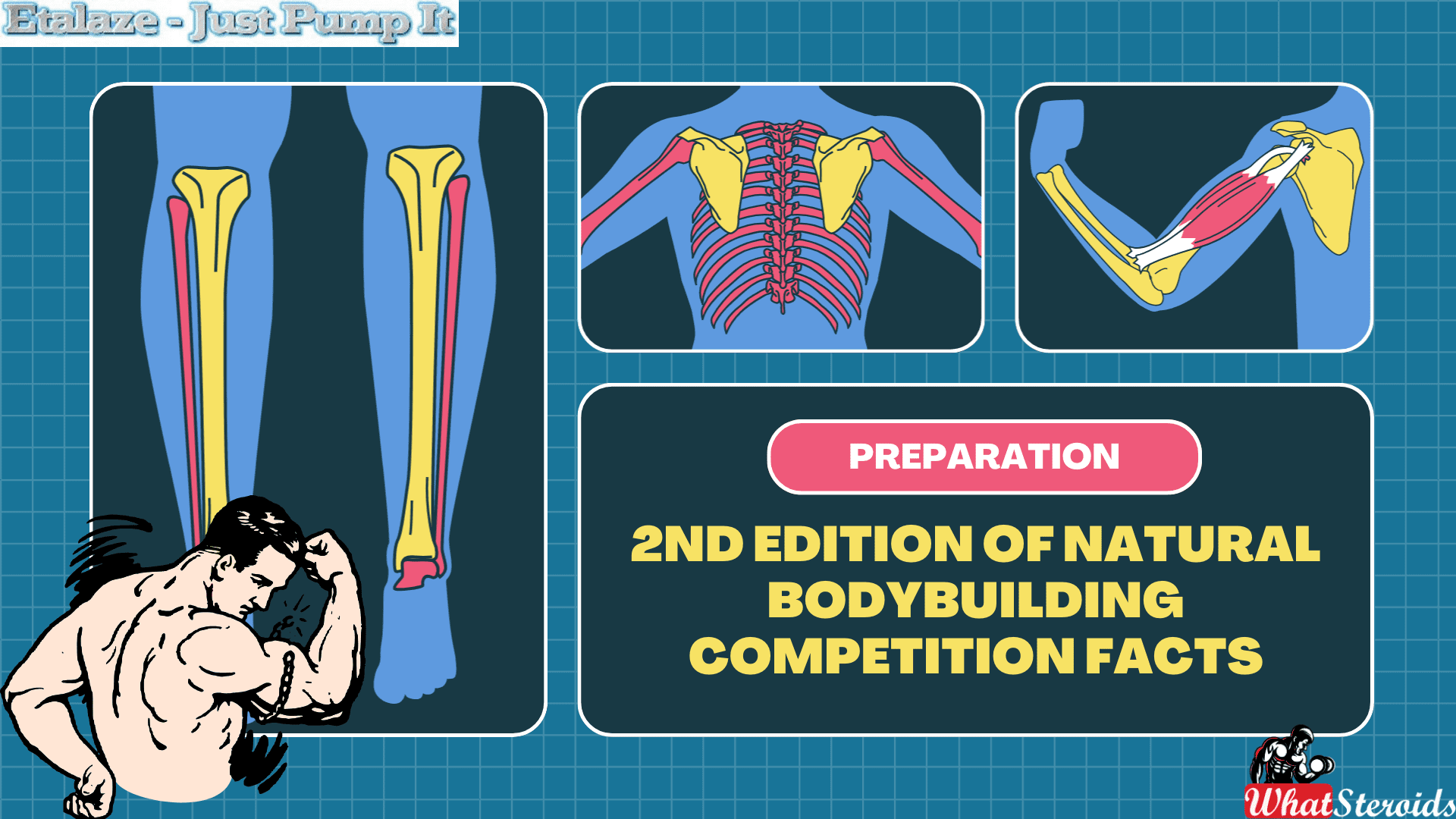
Natural bodybuilding competitions are designed to promote and celebrate athletes who build their physiques without the use of performance-enhancing drugs. These events emphasize fair play, health, and the natural development of muscle mass and definition.
The second edition of natural bodybuilding competitions has gained momentum globally, particularly focusing on drug-free athletes. These competitions are hosted by various organizations like the INBA/PNBA (International Natural Bodybuilding Association/Professional Natural Bodybuilding Association) and OCB (Organization of Competitive Bodybuilders).
In 2024, several notable events have been planned, including the INBA Natural Universe and INBA World Cup, both of which emphasize natural bodybuilding through rigorous drug testing policies. These events aim to showcase competitors who adhere to strict drug-free protocols, and winners often earn pro cards allowing them to compete in higher-level professional competitions.
These competitions focus on categories like men's bodybuilding, classic physique, and women's figure and bikini, among others. Athletes undergo polygraph and urine tests to ensure compliance with natural bodybuilding standards. The winners often receive medals, trophies, or pro status
Bodybuilding
Primal Movements: Our Ultimate Guide for Maximum Results
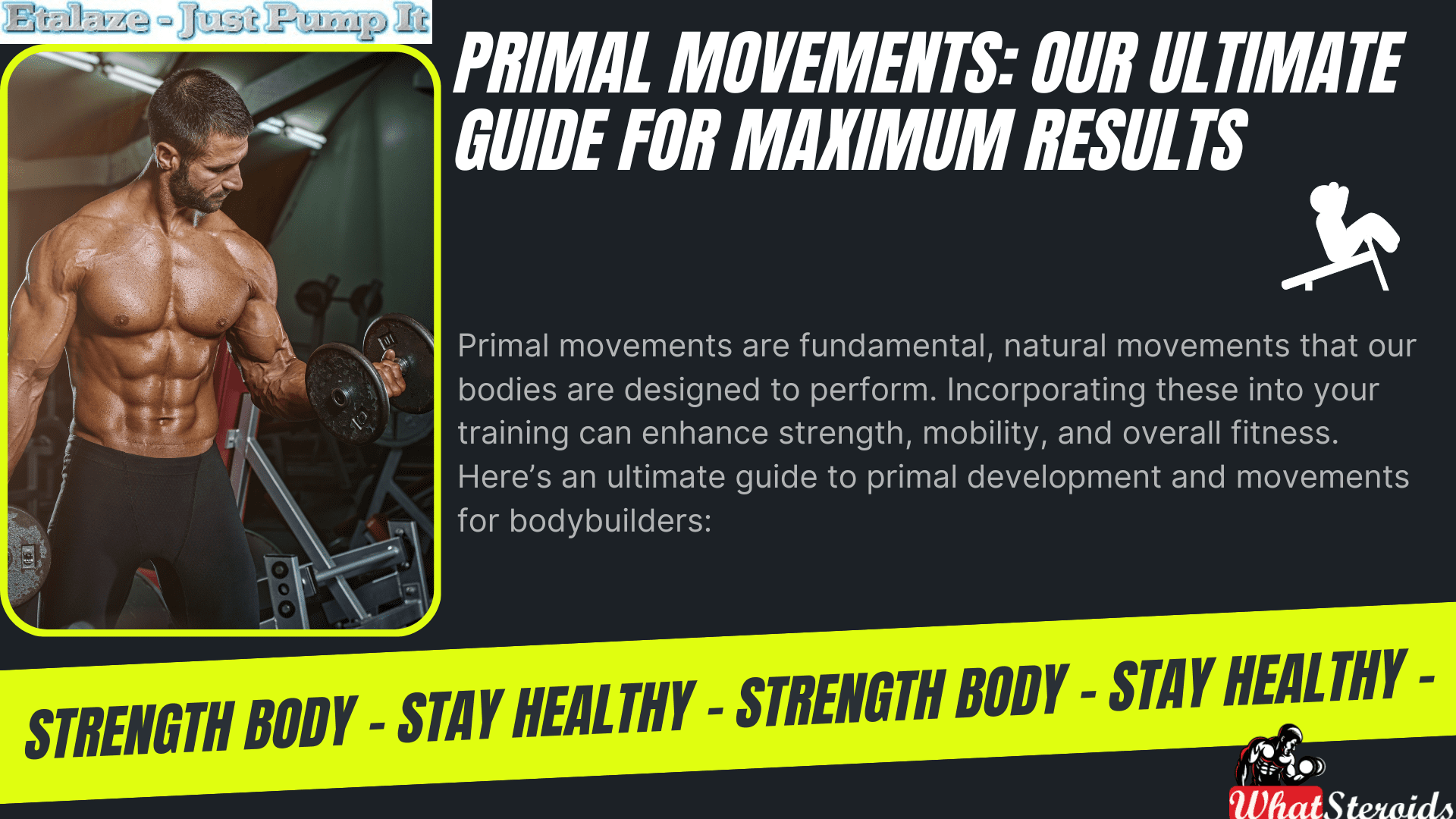
Primal movements are fundamental, natural movements that our bodies are designed to perform. Incorporating these into your training can enhance strength, mobility, and overall fitness. Here’s an ultimate guide to primal development and movements for bodybuilders:
 Buy Cut Long 300 by Dragon Pharma
Buy Cut Long 300 by Dragon Pharma
Understanding Primal Movements
Primal movements are basic, functional movements that mimic the natural actions humans have performed for thousands of years. These movements are essential for developing a strong, balanced, and resilient body. They can be categorized into seven primary patterns:
Related Article: How Much Do You Know About B-AET? A Fat Burner You’ve Been Missing
- Push
- Pull
- Squat
- Lunge
- Hinge
- Rotate
- Gait (Locomotion)
The Seven Primal Movement Patterns
Push
Description: Involves moving a weight or resistance away from your body.
Examples: Push-ups, bench press, overhead press.
Muscles Worked: Chest, shoulders, triceps.
Pull
Description: Involves drawing a weight or resistance towards your body.
Examples: Pull-ups, rows, bicep curls.
Muscles Worked: Back, biceps, forearms.
Squat
Description: A fundamental lower-body movement where you lower your hips from a standing position and then stand back up.
Examples: Bodyweight squats, barbell squats, goblet squats.
Muscles Worked: Quadriceps, hamstrings, glutes, calves.
Lunge
Description: A single-leg movement that involves stepping forward, backward, or to the side and lowering your hips.
Examples: Forward lunges, reverse lunges, lateral lunges.
Muscles Worked: Quadriceps, hamstrings, glutes, calves.
Hinge
Description: Involves bending at the hips while keeping a neutral spine.
Examples: Deadlifts, kettlebell swings, hip thrusts.
Muscles Worked: Hamstrings, glutes, lower back.
Rotate
Description: Involves twisting or rotating the torso.
Examples: Russian twists, woodchoppers, cable rotations.
Muscles Worked: Obliques, abdominals, lower back.
Gait (Locomotion)
Description: Involves movements that propel the body forward.
Examples: Walking, running, crawling, bear crawls.
Muscles Worked: Full body, with emphasis on legs and core.
Benefits of Primal Movements
Functional Strength: Primal movements enhance your ability to perform everyday tasks efficiently and safely.
Improved Mobility: These movements promote flexibility and range of motion, reducing the risk of injury.
Balanced Development: By working multiple muscle groups, primal movements ensure balanced muscle development.
Core Stability: Many primal movements engage the core, improving overall stability and strength.
Increased Caloric Burn: Compound movements like these burn more calories, aiding in fat loss and conditioning.
Incorporating Primal Movements into Your Training
Warm-Up: Start with dynamic stretches and light cardio to prepare your body.
Compound Exercises: Focus on compound exercises that incorporate multiple primal movements.
Progressive Overload: Gradually increase the weight or resistance to continue making gains.
Variety: Mix up your routine to prevent plateaus and keep your workouts interesting.
Recovery: Ensure adequate rest and recovery to allow your muscles to repair and grow.
Sample Primal Movement Workout
Warm-Up: 5-10 minutes of light cardio and dynamic stretching.
Workout:
Push: 3 sets of 10-12 reps of push-ups or bench press.
Pull: 3 sets of 10-12 reps of pull-ups or rows.
Squat: 3 sets of 10-12 reps of bodyweight or barbell squats.
Lunge: 3 sets of 10-12 reps per leg of forward or reverse lunges.
Hinge: 3 sets of 10-12 reps of deadlifts or kettlebell swings.
Rotate: 3 sets of 15-20 reps of Russian twists or cable rotations.
Gait: 3 sets of 30-60 seconds of bear crawls or sprints.
Cool-Down: 5-10 minutes of static stretching and deep breathing exercises.
1. Warm-Up and Mobility Drills
Start your workout with primal movement-based warm-ups to prepare your body. For example:
- Dynamic stretches: Incorporate lunges with a twist, leg swings, and arm circles.
- Mobility drills: Include exercises like hip circles, cat-cow stretches, and thoracic rotations.
2. Compound Exercises
Add primal movements as the core of your workout. Here’s how you can structure it:
- Push Day: Combine bench presses with push-ups.
- Pull Day: Mix pull-ups with rows.
- Leg Day: Integrate squats and lunges with deadlifts.
3. Supersets and Circuits
Create supersets or circuits that include primal movements:
- Superset Example: Pair squats with pull-ups or push-ups with lunges.
- Circuit Example: Rotate through exercises like kettlebell swings, bear crawls, and Russian twists with minimal rest.
4. Functional Training Days
Dedicate one or two days a week to functional training focused on primal movements:
Sample Functional Workout
-
- Warm-Up: 5 minutes of dynamic stretching.
- Circuit: 3 rounds of:
- 10 push-ups
- 10 pull-ups
- 15 squats
- 10 lunges per leg
- 15 kettlebell swings
- 20 Russian twists
- 30 seconds of bear crawls
- Cool-Down: 5 minutes of static stretching.
5. Active Recovery
Use primal movements on active recovery days to promote mobility and flexibility:
- Activities: Light yoga, walking, or gentle bodyweight exercises like lunges and squats.
6. Progressive Overload
Gradually increase the intensity of primal movements by adding weights or resistance bands:
- Example: Start with bodyweight squats, then progress to goblet squats, and eventually barbell squats.
7. Listen to Your Body
Pay attention to how your body responds to these movements and adjust accordingly:
- Modify: If a movement feels too challenging, modify it to suit your fitness level.
- Rest: Ensure you’re getting adequate rest and recovery to prevent overtraining.
Read More: Cellular Alchemy to Restore Testosterone Levels
Sample Weekly Routine for Primal Movements
Monday: Push Day
- Bench Press
- Push-Ups
- Overhead Press
Tuesday: Pull Day
- Pull-Ups
- Rows
- Bicep Curls
Wednesday: Leg Day
- Squats
- Lunges
- Deadlifts
Thursday: Functional Training
- Circuit of primal movements (as outlined above)
Friday: Active Recovery
- Light yoga or walking
Saturday: Full-Body Workout
- Combination of push, pull, squat, and hinge movements
Sunday: Rest Day
By incorporating these primal movements, you’ll enhance your functional strength, mobility, and overall fitness. If you have any specific goals or need further customization, feel free to ask! Happy training.
For optimal performance in primal movements before a bodybuilding competition, consider these supplements:
Pre-Workout Supplements: These can provide energy and enhance performance. Look for products containing creatine, nitric oxide stimulators, and caffeine.
Post-Workout Supplements: Essential for recovery, including protein powders, BCAAs (Branched-Chain Amino Acids), and multivitamins.
Fat Burners and Metabolizers: These can help in reducing body fat while maintaining muscle mass. Ingredients like green tea extract and L-carnitine are popular.
Adaptogens: Supplements like ashwagandha and rhodiola rosea can help manage stress and improve endurance.
Conlusion
Primal movements, which include squatting, lunging, hinging, twisting, walking, pushing, and pulling, benefit from a strong foundation of functional strength and mobility. Ensuring your body is well-nourished and recovered will help you perform these movements effectively.
Incorporating primal movements into your bodybuilding routine can lead to significant improvements in strength, mobility, and overall fitness. By focusing on these fundamental patterns, you can build a well-rounded, resilient body that performs well both in and out of the gym.
-
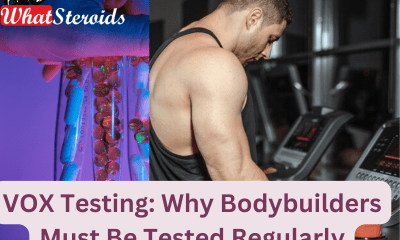
 Steroids2 years ago
Steroids2 years agoVOX Testing: Why Bodybuilders Must Have It Tested Regularly
-

 Steroids2 years ago
Steroids2 years agoShavers and Other Body Grooming Equipment for Bodybuilders In 2023
-

 Steroids2 years ago
Steroids2 years agoChatGPT and Other Avenues to Find Great Bodybuilding Coaches
-

 Steroids2 years ago
Steroids2 years agoBest Oil Recommendations Before Competition for Subtle Shimmer
-

 Steroids2 years ago
Steroids2 years agoPowerlifting Vs Power Building: Find Out the Big Difference and When to Shift Between the Two
-

 Anabolic Steroids1 year ago
Anabolic Steroids1 year agoLegality of Anabolic Steroids In Latin America
-

 Nutrition1 year ago
Nutrition1 year agoEverything Nutritional Food: What’s Too Much Or Too Little
-

 Beginners1 year ago
Beginners1 year agoTren Cycle for Beginners
-

 Bodybuilding Products10 months ago
Bodybuilding Products10 months agoTelmisartan In Bodybuilding: An Expert’s Advice
-

 Bodybuilding12 months ago
Bodybuilding12 months agoList of FDA-Approved Peptides
-

 Bodybuilding1 year ago
Bodybuilding1 year agoCompetition Prep Cycle for Pro Bodybuilders
-

 Anabolic Steroids8 months ago
Anabolic Steroids8 months agoHow Much Do You Know About B-AET? A Fat Burner You’ve Been Missing
-

 Bodybuilding1 year ago
Bodybuilding1 year agoChia Seeds in A Bodybuilder’s Diet: An Expert’s Advice
-

 Product Reviews8 months ago
Product Reviews8 months agoTop Vitamins for Skin Health
-

 Anabolic Steroids1 year ago
Anabolic Steroids1 year agoStart The New Year Strong With These Tips
-

 Steroids9 months ago
Steroids9 months agoAnadrol Cycle: Benefits, Doses, Alternatives, etc.
-

 Bodybuilding7 months ago
Bodybuilding7 months agoHormone Replacement Therapy (TRT) Cycle Guide
-
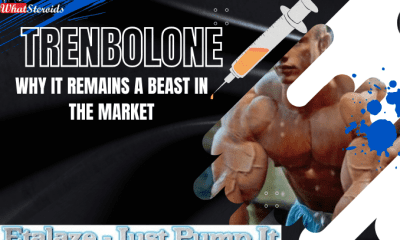
 Steroids11 months ago
Steroids11 months agoTrenbolone: Why it Remains A Beast In the Market
-

 Steroids8 months ago
Steroids8 months agoMajor Bodybuilding Peptides Explained
-
Anabolic Steroids1 year ago
Natural Steroids for Bodybuilding
-

 Anabolic Steroids6 months ago
Anabolic Steroids6 months agoJoint Stiffness: How to Manage It While on AAS
-

 Steroids7 months ago
Steroids7 months agoOmnitope (Oxytocin)
-

 Bodybuilding10 months ago
Bodybuilding10 months agoHow Much Is Too Much Cardio? Understanding Heart Rate Zones
-
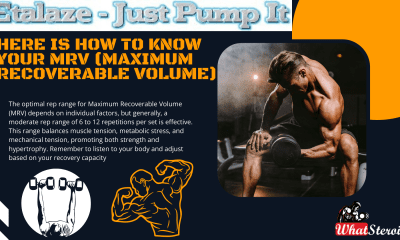
 Bodybuilding8 months ago
Bodybuilding8 months agoHere Is How To know Your MRV (Maximum Recoverable Volume)
-
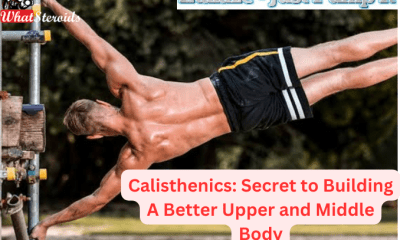
 Beginners1 year ago
Beginners1 year agoCalisthenics: Secret to Building A Better Upper and Middle Body


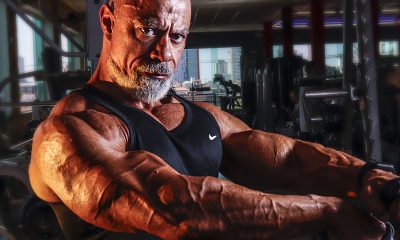






 Click here to buy 1-Test Cyp/DHB 100 by Dragon Pharma
Click here to buy 1-Test Cyp/DHB 100 by Dragon Pharma












